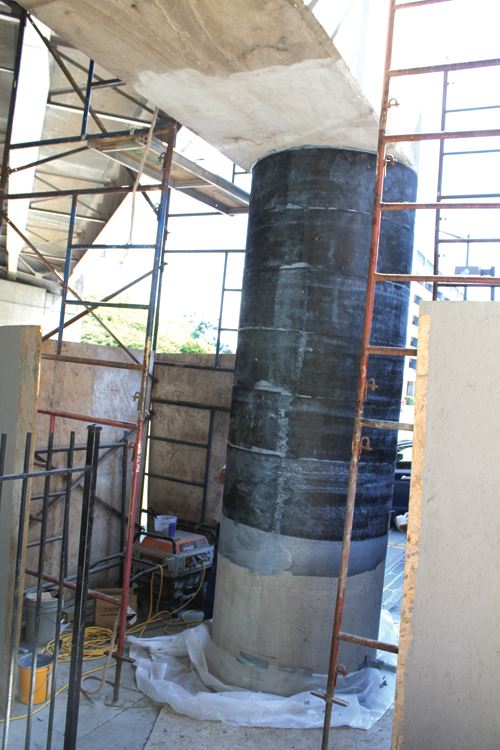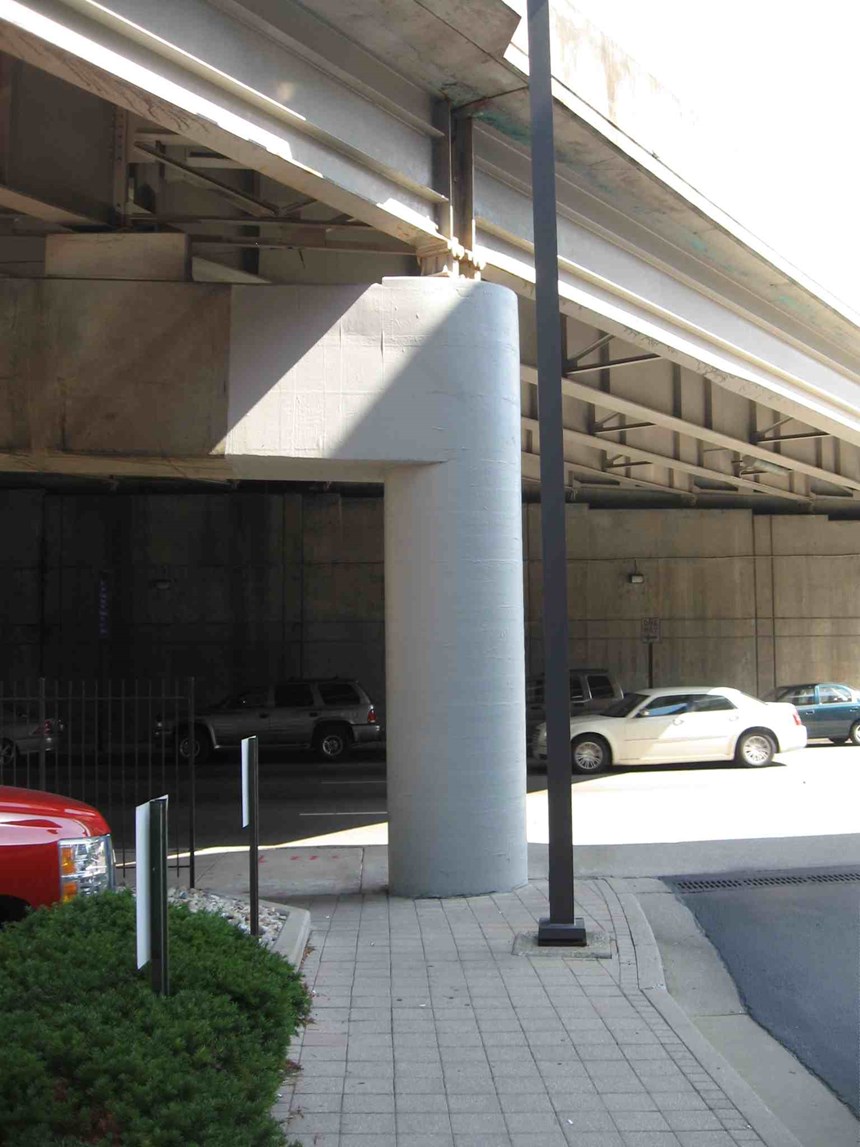Triaxial fabric wrap saves critical highway pier
The Department of Civil Engineering at the University of Kentucky (Lexington, Ky.), and sister research group the Kentucky Transportation Cabinet, recently completed the first bridge pier repair demonstration project to use triaxial carbon fabric.
The Department of Civil Engineering at the University of Kentucky (Lexington, Ky.), and sister research group the Kentucky Transportation Cabinet, recently completed the first bridge pier repair demonstration project to use triaxial carbon fabric. The reinforced concrete pier, under interstate 65 at Muhammad Ali Blvd. in downtown Louisville, Ky., had deteriorated enough to expose rebar, after years of exposure to winter deicing salt spray. Cabinet officials wanted to rehabilitate rather than replace the pier, using corrosion-resistant composite column wraps, which “jacket” the concrete, enabling it to carry additional loads, even when the internal steel has yielded due to damage. Lead researcher Dr. Issam Harik selected QISO fabric (A&P Technology Inc., Cincinnati, Ohio), a tubular bias-woven braid that is then slit to form a quasi-isotropic flat fabric. “Normally, a unidirectional tape or conventionally woven fabric is used for column repair, but,” Harik explains, “with QISO, we could [use] fewer layers.”
QISO triaxial material also offered a reportedly ideal ratio of axial (parallel to the column’s long axis) and helical, or hoop, fibers to meet the project’s performance goals, based on Harik’s engineering calculations. “There really is little research out there regarding the use of triaxial fabrics in this application,” says Harik. “We’re looking forward to doing more detailed analysis.”
After the exposed steel was covered with a grout admixture to form a consistent surface for the fabric, 20-inch/508-mm wide rolls of QISO, at lengths short enough that a worker could lay it up within the 20-minute pot life, were wet out with a two-part epoxy from Sika Corp. (Lyndhurst, N.J.) and installed. Each wrap was overlapped 4 inches/101.6 mm, and vertical seams were staggered to fall on opposite sides of the column.
Finished in late 2009, the wrap has been visually inspected every few months to ensure good adhesion and no delamination. Concludes Harik, “We’re anticipating more projects using QISO in the future.”
Related Content
-
Materials & Processes: Fibers for composites
The structural properties of composite materials are derived primarily from the fiber reinforcement. Fiber types, their manufacture, their uses and the end-market applications in which they find most use are described.
-
Composite resins price change report
CW’s running summary of resin price change announcements from major material suppliers that serve the composites manufacturing industry.
-
Biteam introduces 3D Noodle International AB spin-off for 3D fabric noodles
Biteam 3D’s third spin-off implements its proprietary 3D weaving technology to produce a variety of carbon, ceramic and other fiber 3D fabric noodle preforms.







.jpg;maxWidth=300;quality=90)







